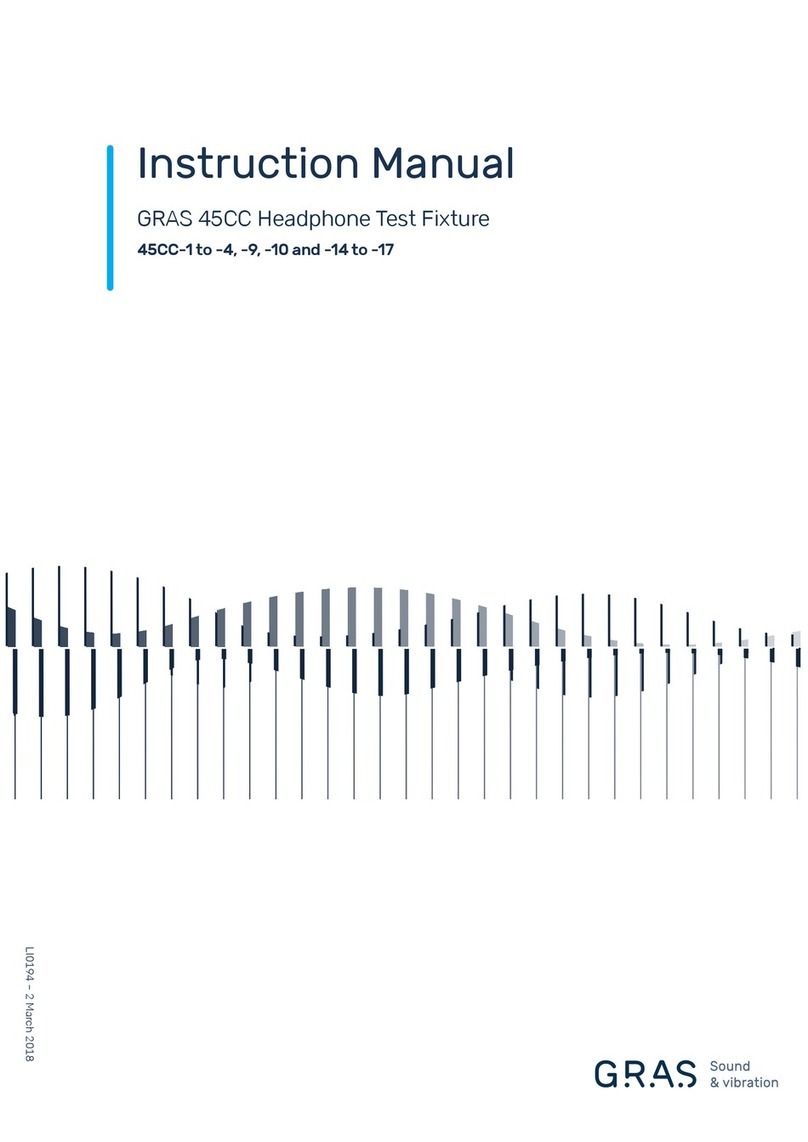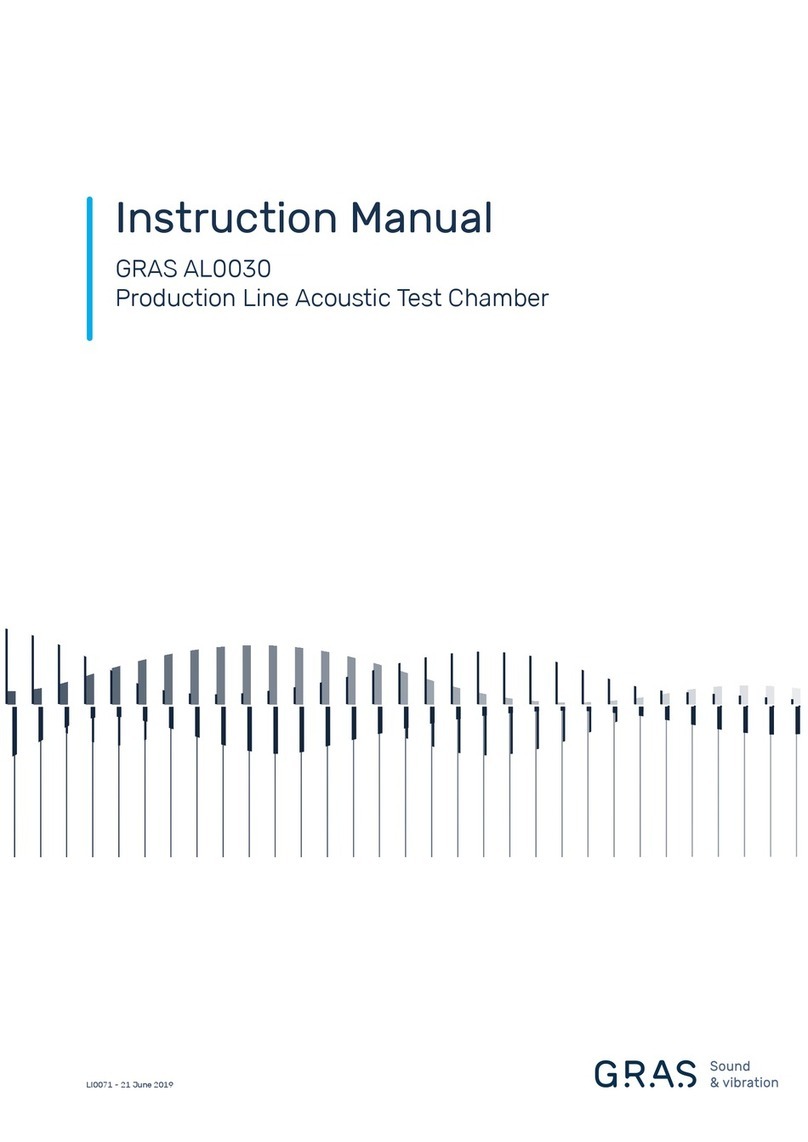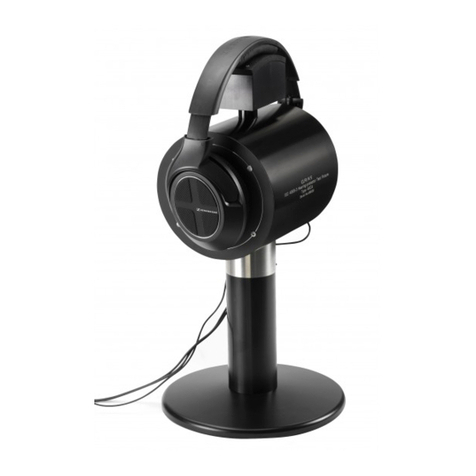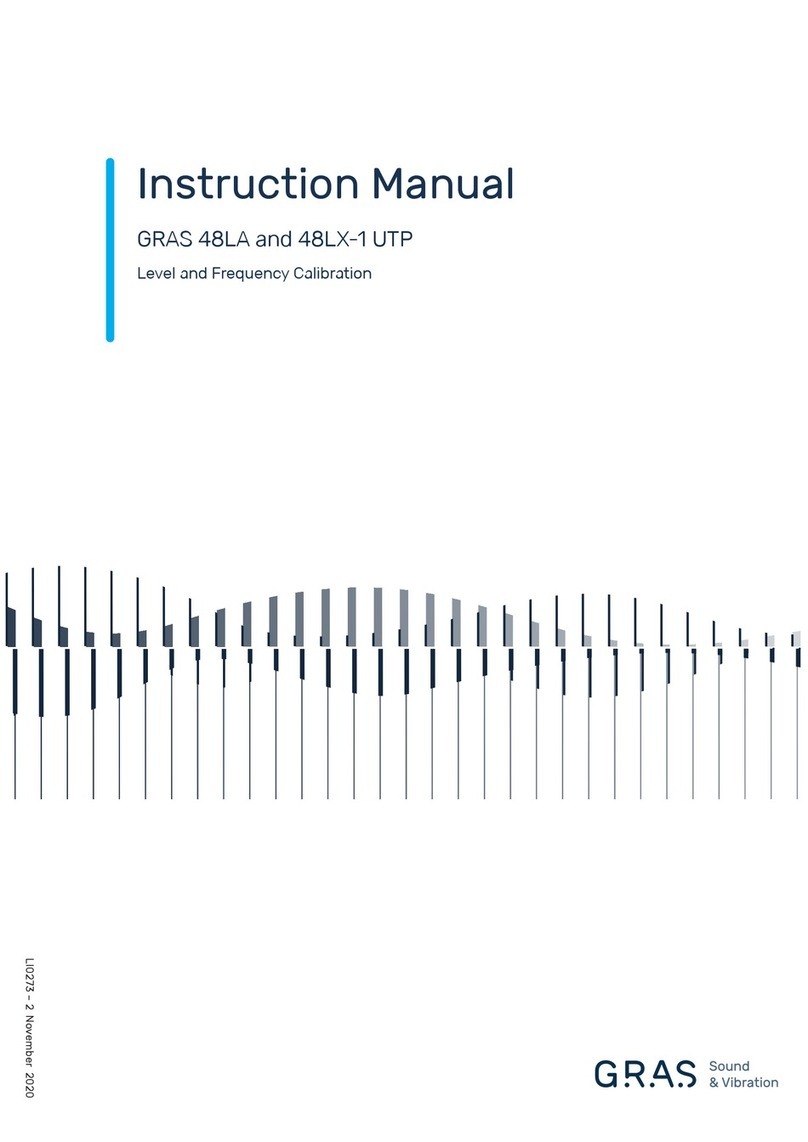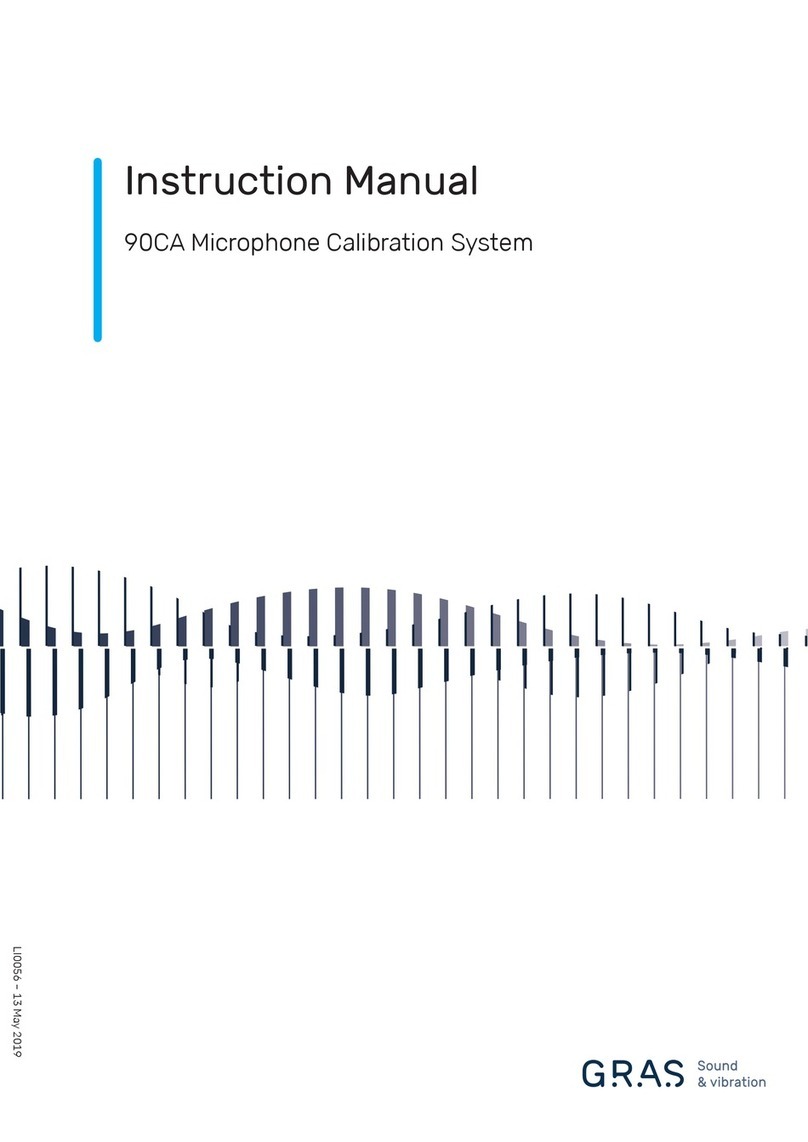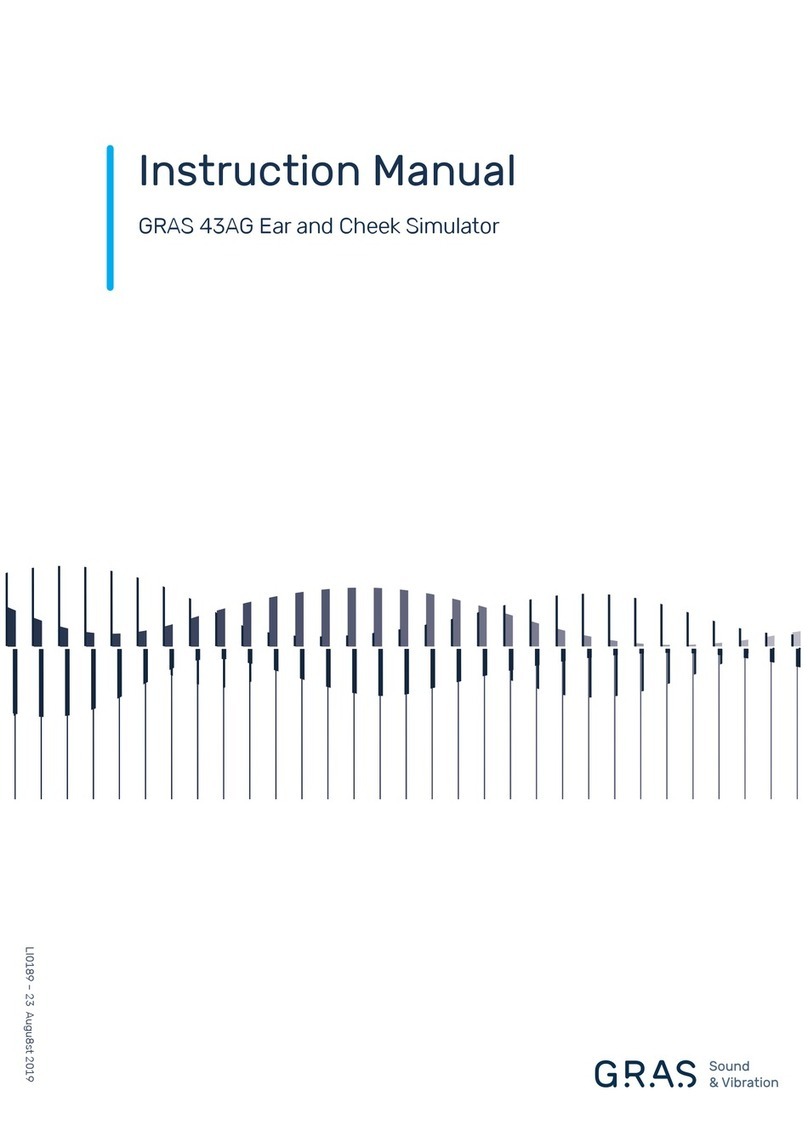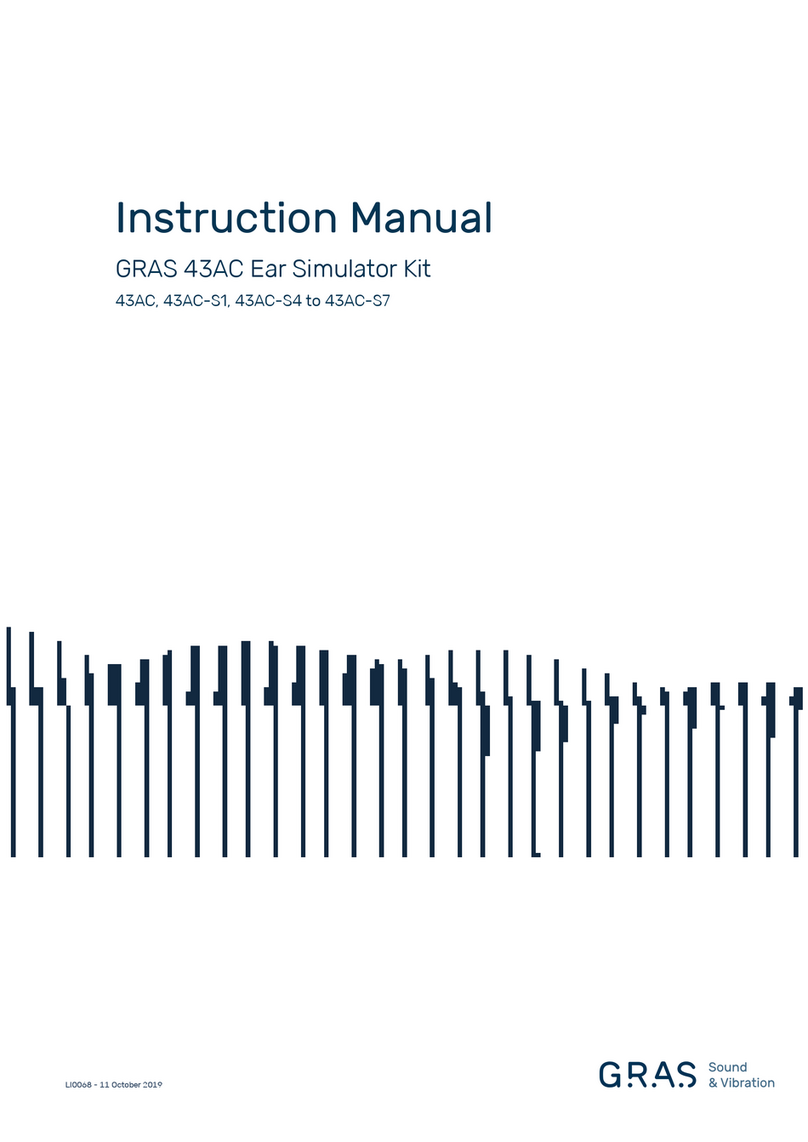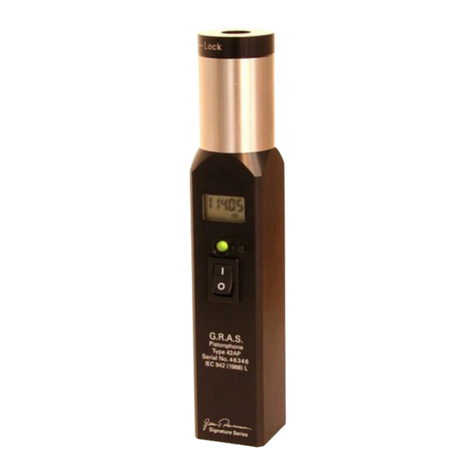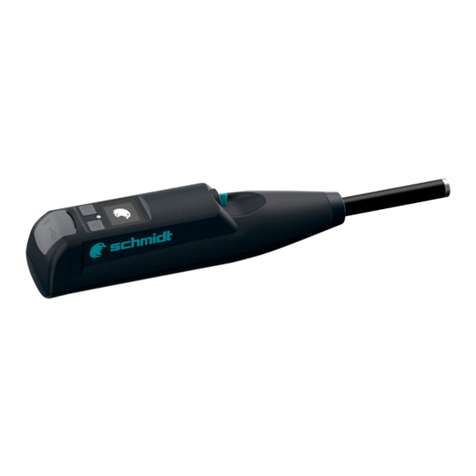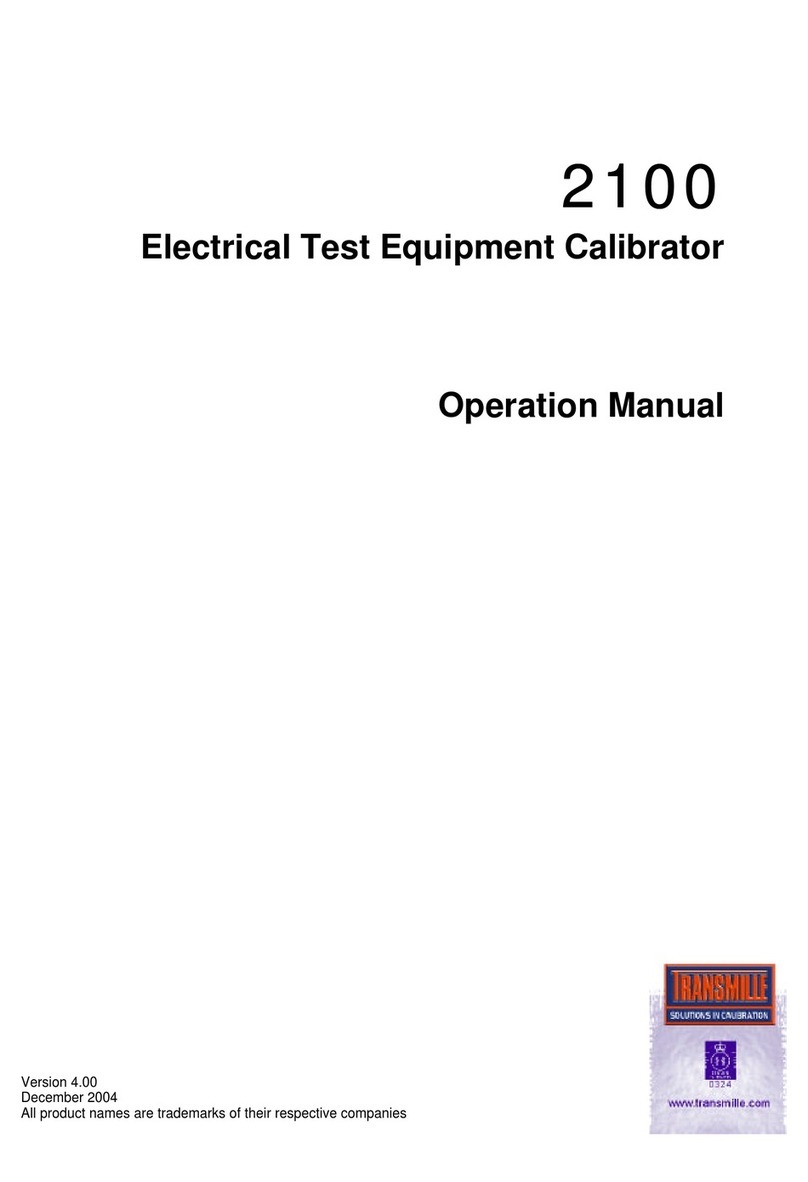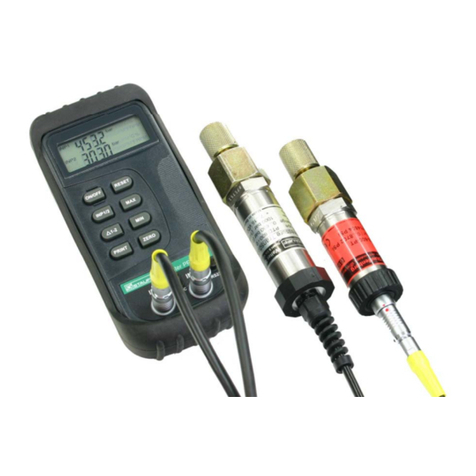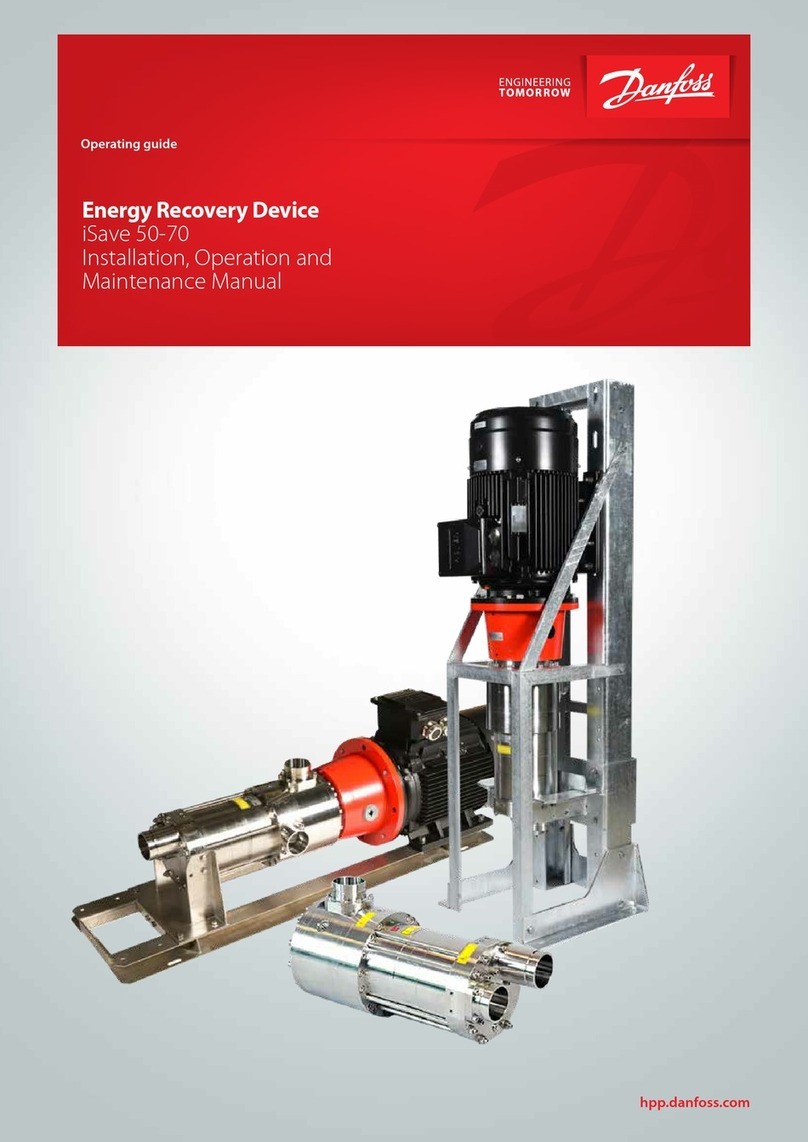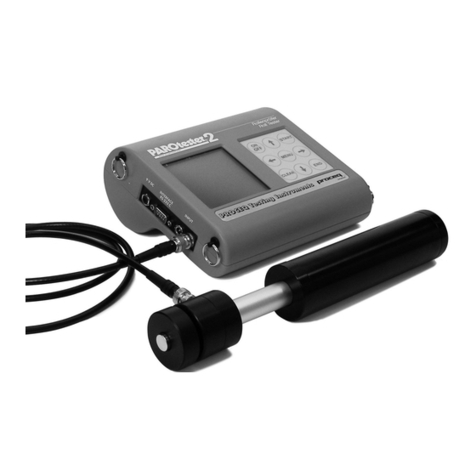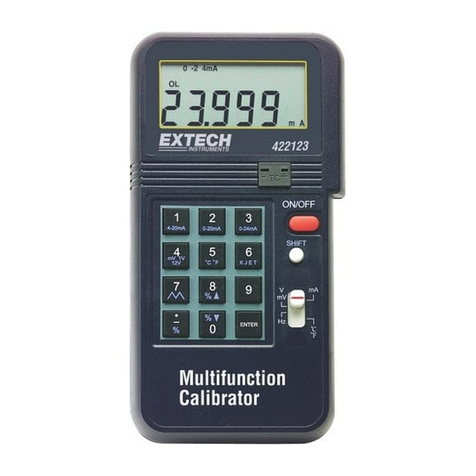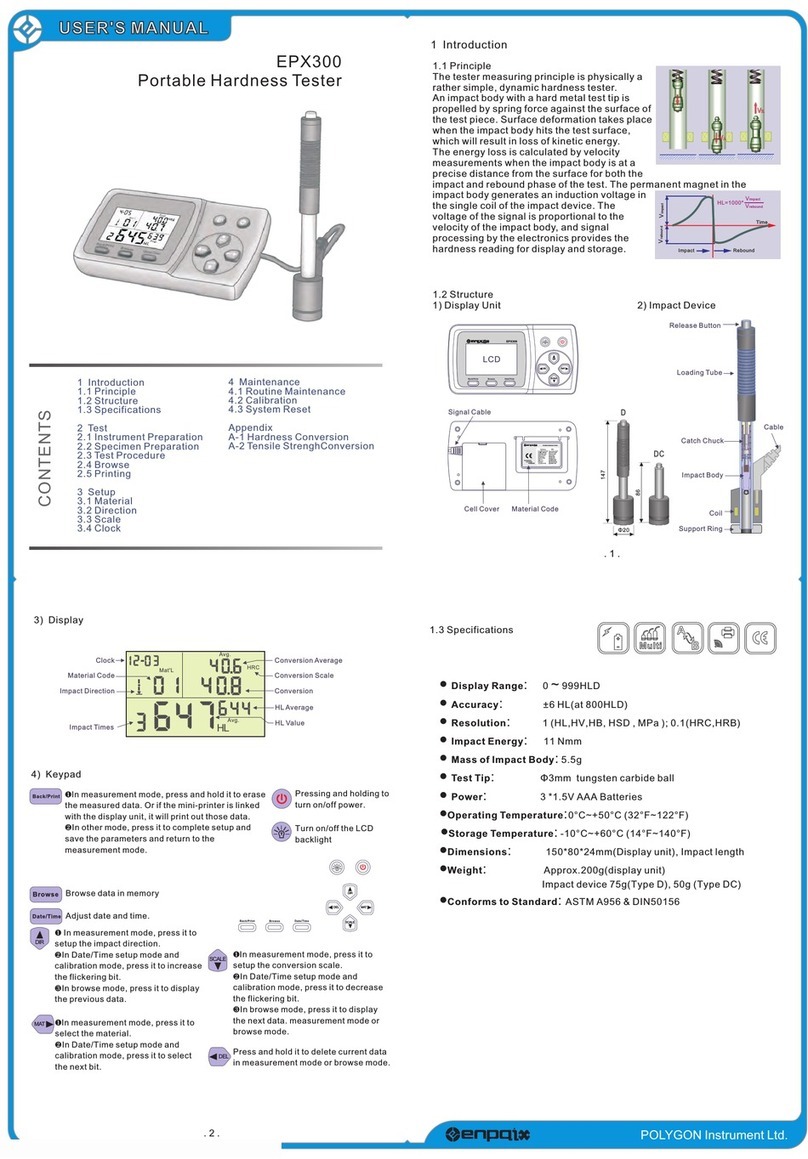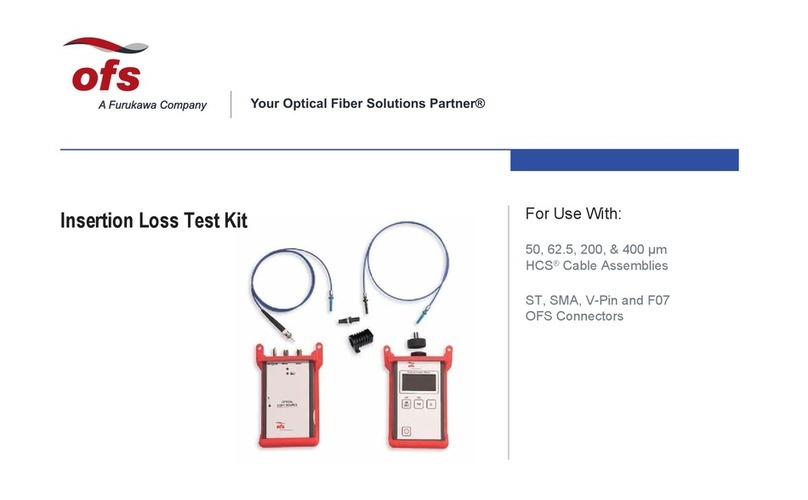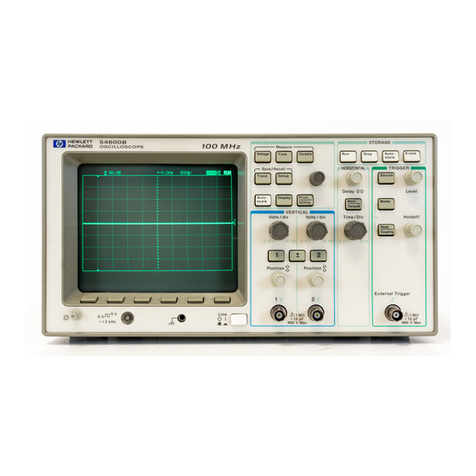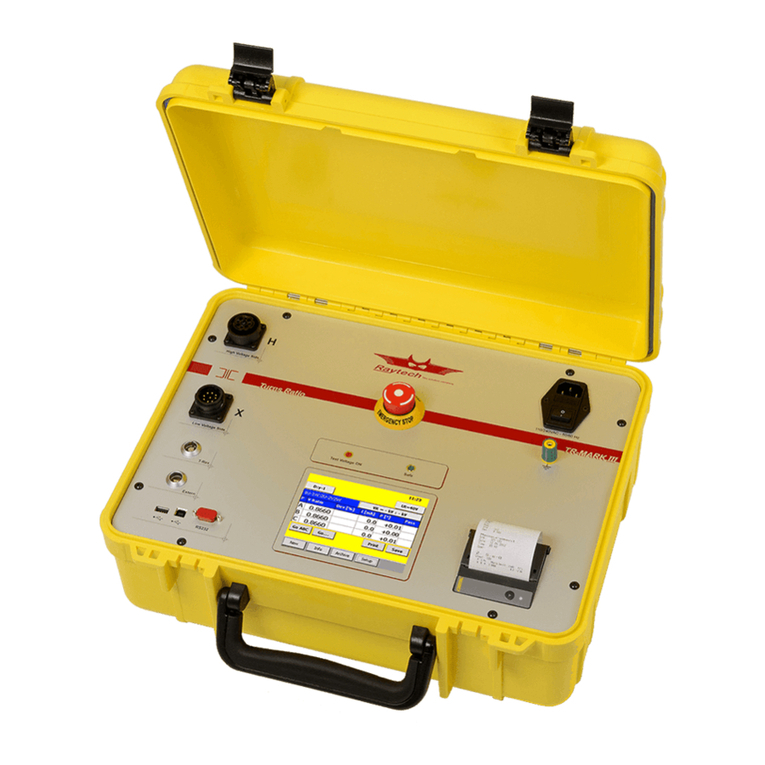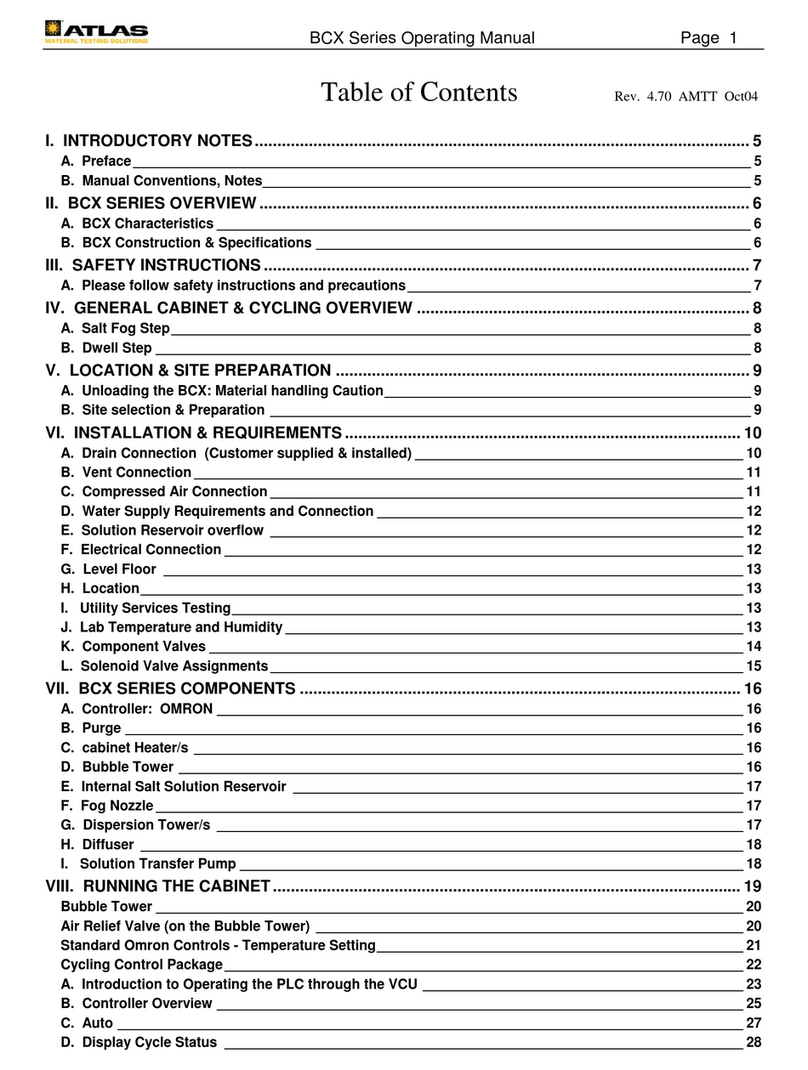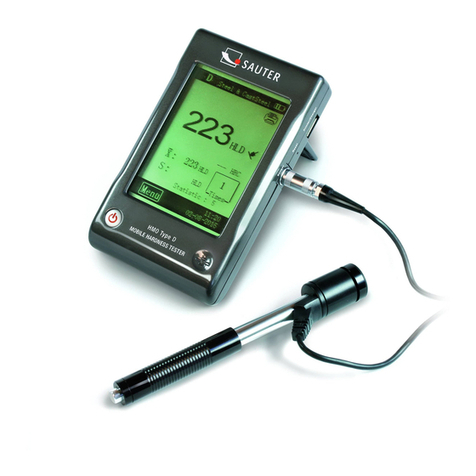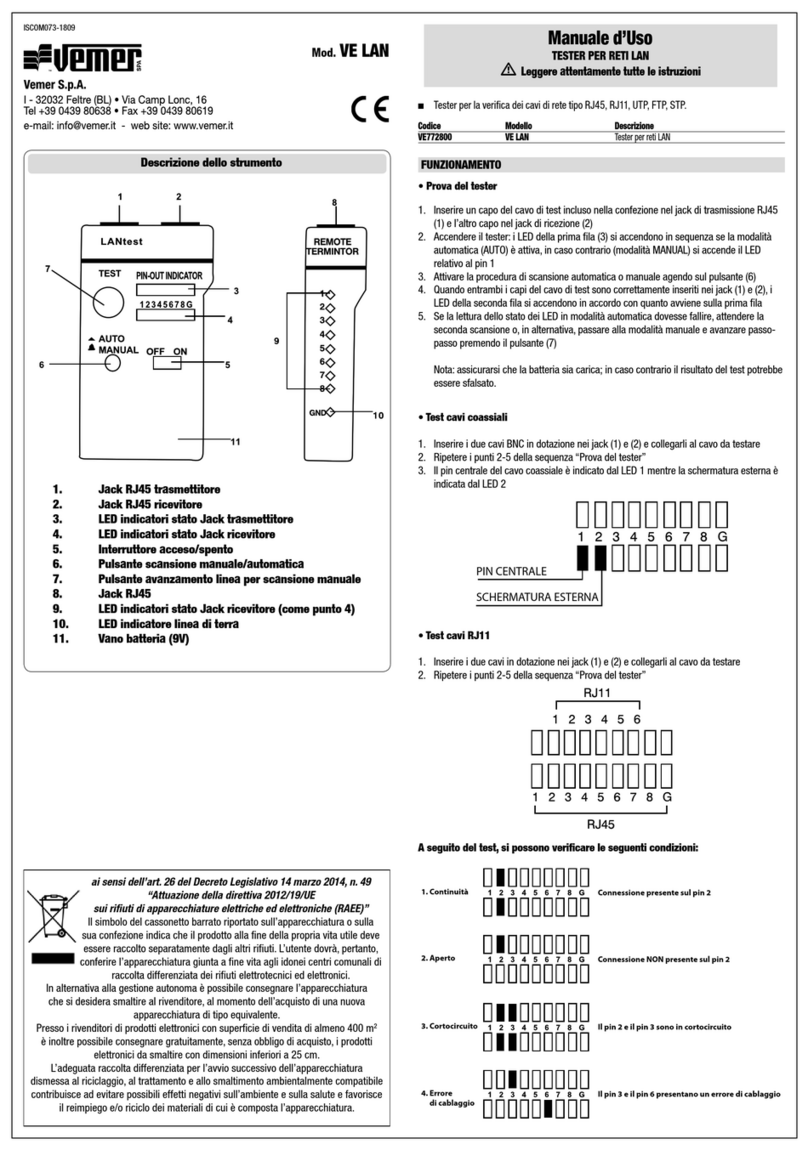GRAS 50GI-R User manual

www.gras.dk
LI0084 – Revision 6 June 2014
Instruction Manual
50GI-R Sound Intensity Probe

2
LI0084 – Revision 6 June 2014
Revision History
Revision Date Description
1 13 February 2013 First publication
2 19 June 2013 Revision - ordering information for spacers corrected
3 6 June 2014 New part numbers for spacers
Copyright Notice
© 2014 G.R.A.S. Sound & Vibration A/S
http://www.gras.dk
Any technical documentation that is made available by G.R.A.S. is the copyrighted work of
G.R.A.S. and is owned by G.R.A.S.
The content in this document is subject to change without notice. G.R.A.S. Sound & Vibration A/S
is not liable or responsible for any errors or inaccuracies that may appear in this document.
Trademarks
Product names mentioned in this document may be trademarks or registered trademarks of their
respective companies and are hereby acknowledged.

3
LI0084 – Revision 6 June 2014
Contents
Introduction and Description ............................................................ 4
Main Components...................................................................................... 5
Handling and Assembling the Probe .................................................. 8
The Microphones ....................................................................................... 8
Probe Design............................................................................................. 8
Physical Strength ....................................................................................... 8
Assembling the Probe ................................................................................ 9
Calibration ................................................................................. 12
Checking the Sensivity and P-I Index using a Pistonphone............................. 12
Checking the Probe’s P-I Index using an Intensity Calibrator........................... 13
Ordering Information.................................................................... 14
Specifications and Warranty .......................................................... 15
Calibration............................................................................................... 15
Warranty................................................................................................. 15
Service and Repairs.................................................................................. 15

4
LI0084 – Revision 6 June 2014
Introduction and Description
The G.R.A.S 50GI-R Sound-intensity Probe is a two-microphone sound intensity probe. It has a
pair of G.R.A.S. 40GK phase-matched ½" microphones, two G.R.A.S. 26CB ¼" phase-matched
microphone preamplifiers, solid spacers, remote control handle and connection cable. The probe
is adjustable, durable and fully complies with the following requirements:
• IEC 61043, Electroacoustics - Instruments for the Measurement of Sound Intensity –
Measurements with Pairs of Pressure Sensing Microphones, 1993 for Class 1 Sound-intensity
probes.
Fig. 1. The 50GI–R Sound Intensity Probe

5
LI0084 – Revision 6 June 2014
Main Components
The main components of the 50GI-R Sound-intensity Probe are:
• 40GK Sound Intensity Microphone Pair
• Two 26CB Microphone Preamplifiers
• Four solid spacers of various lengths and a spacer cup (see Fig. 6)
• Remote-control handle with (where applicable) up to two push buttons for controlling
measurements
The 50GI-R is delivered in a carrying case similar to the one shown in Fig. 2, complete with
microphones, preamplifiers, standard accessories and a remote-control handle.
Fig. 2. The type of carrying case delivered with the 50GI-R
Microphones
The microphones are high sensitivity, free-field ½" condenser microphones with a uniquely-
designed pressure equalization system that ensures extremely well defined phase characteristics.
The microphones and preamplifiers are mounted on the end of the telescopic arm of the Remote-
control handle. To cover the full frequency range from 30Hz to 10kHz, the 50GI–R is delivered
with four solid interchangeable spacers for spacing the microphones at 12 mm, 25 mm, 50 mm
and 100 mm.

6
LI0084 – Revision 6 June 2014
Fig. 3. Pairs of phase-matched ½"microphone cartridges, with and without spacer.
Preamplifiers
The small ¼" diameter and 40mm long microphone preamplifiers are housed in robust, stain-
less steel casings which enable novel probe designs that reduce disturbances to the sound field
otherwise brought about by the effects of shadows and diffraction. Symmetry of design enables
reliable calibrations as described in the proposed standard (ISO/DIS 9614-2) for sound power
measurements using sound-intensity measurements.
26CB ¼" preamplifier
Set
2 x Cable AA0084
Microdot
male
Microdot
male
Fig. 4. 26CB ¼" Preamplifier set supplied with 50GI-R and the 2 microdot cables.
Cables
Serial to USB
Adapter
RS232 BNC BNC 12-pin LEMO
female
12-pin LEMO
male
12-pin LEMO
male
KE0132
AC0024
AA0021
Fig. 5. Cables for control and signal connection to analyzer

7
LI0084 – Revision 6 June 2014
Spacers
To cover the wide frequency range (30 Hz - 10 kHz), Type 50GI-R Sound Intensity Probe is deliv-
ered with four solid spacers of various lengths and a spacer cup Fig. 6.
RA0263
100mm spacer
RA0264
50mm spacer
RA0265
25mm spacer
RA0266
12mm spacer
GR0040
Spacer cup
Fig. 6. The various spacers supplied with the 50GI-R.
To select the most appropriate spacer for the actual measurements, refer to Fig. 7.
With ¼" Mics. Type 40BI and 6mm spacer (GU0020)
100 1k 10k
10 100k
12mm (GU0005)
25mm (GU0004)
50mm (GU0003)
100mm (GU0002)
d
Frequency Hz
12 mm (RA0266)
25 mm (RA0265)
50 mm (RA0264)
100 mm (RA0263)
Fig. 7. Frequency ranges covered by the various spacer lengths.

8
LI0084 – Revision 6 June 2014
Handling and Assembling the Probe
The Microphones
The 40GK Microphones are a pair of special free-field microphones with extremely well-controlled
phase characteristics. They are delivered as a matched pair each with individual calibration data
as well as data on differences between their phase responses.
These microphones have a unique pressure equalisation system that ensures a well defined
lower-limiting frequency and an extremely low sensitivity to sound pressures at the pressure
equalisation channels. Therefore, they can be calibrated in single-port phase calibrators such as
the G.R.A.S. 51AB Intensity Calibrator.
Probe Design
The design of the Intensity Probe minimizes acoustic reflections and the influence of diffraction.
This has been achieved by removing any reflective components from the sound path at 0° inci-
dence. Since sound waves at 0° incidence are the main contributors to the total sound intensity
level, it is important that disturbances in this direction be minimized.
The thin preamplifier cables (diameter of 2.5 mm) will have no influence on the sound field since
they constitute a highly irregular surface with negligible reflections. The effects of acoustic diffrac-
tion and reflections from the physical parts of the Intensity Probe are below 0.15 dB.
The microphones (40GK) are supplied as sets that include spacers and three preamplifier adapters
(two right-angled and one straight).
The distances between microphones and preamplifiers have been kept to a minimum in order to
avoid problems with stray capacitance and sensitivity to vibration. While amplitude characteristics
are little influenced by vibrations in the conductors carrying the raw signals from the microphones,
the phase characteristics of an Intensity Probe can be critically affected by even very small vibra-
tions. Therefore, the ¼" preamplifiers are mounted in rigid contact with the ½" microphones via
short adapters (right-angled and/or straight). This also eliminates problems with non-matching
capacitances between microphones and preamplifiers that could give rise to phase problems.
Physical Strength
From a physical point of view, an Intensity Probe is robust and easy to assemble and dismantle.
Typically, two points in an Intensity Probe are critical for its physical strength. These points are the
threads on the microphones and preamplifiers as well as the threads on the microphones’ protec-
tion grids. The connections between microphones and preamplifiers are very delicate. Therefore,
the preamplifier threads of the 50GI-R are supported by stainless steel ½" to ¼" adapters.
There is also a protective guard within the ¼" housing of each preamplifier. Furthermore, the
microphones’ protection grids are made of stainless steel that improve their ability to withstand
rough physical treatment – a buckled or damaged protection grid will almost invariably damage a
microphone’s diaphragm beyond repair.

9
LI0084 – Revision 6 June 2014
Assembling the Probe
The Intensity Probe can be assembled in either a straight setup or a symmetrical setup:
• The straight setup is for intensity measurements close to surfaces and general source location
measurements.
• The symmetrical configuration, is ideal for sound power measurements, for example according
to the international standard ISO 9614-2 “Acoustics - Determination of sound power levels of
noise sources using sound intensity” where a rotation test is required.
Fig. 8. Straight setup using the 25-mm spacer.
Fig. 9. Symmetrical setup using the 12-mm spacer.

10
LI0084 – Revision 6 June 2014
RA0003
Straight Adapter
RA0001
Right-angled
Adapter
Spacer Cup
GR0040
Spacer
RA0266 40GK matched
pair of micro-
phones
26CB ¼” CCP
Preamplifier
26CB ¼" CCP
Preamplifier
RA0001 Right-
angled Adapter
26CB ¼" CCP
Preamplifier
Symmetrical setup
Straight setup
Fig. 10. Exploded view of probe assembly for both straight and symmetrical setup.
Assemble as follows:
1. Mount one microphones onto one RA0001 Right-angled Adapter and the other micro-
phone onto the other Right-angled Adapter RA0001 (symmetrical configuration) or onto the
RA0003 Straight Adapter (straight configuration).
2. Unscrew the black protection caps from the two CCP Preamplifiers.
3. Mount the microphone-adapter assemblies onto the preamplifiers.
4. Screw the GR0040 Spacer Cup onto the protection grid of one of the microphones.
5. Select the most appropriate spacer for the frequency range you wish to measure. Refer to
“Spacers” on page 7 to select the spacer needed for the actual application.
6. Screw the spacer onto the protection grid of the other microphone.

11
LI0084 – Revision 6 June 2014
7. Assemble the probe head by pressing the free end of the spacer (mounted on the one micro-
phone) into the spacer cup mounted on the other microphone:
Push together
Microphone
Spacer
Spacer cup
Fig. 11. Assembling the probe head (shown for the symmetrical setup).
8. Mount the probe head by sliding either of the preamplifiers into the clamp (can be
locked at angles of 0°, 45°, 90°, 135° and 180 ° at the top of the telescopic arm, and
tighten the finger screw.
9. Connect the Cable AA0084 to the preamplifiers and mount the cables into the cable guides of
the probe handle
Clamp
Fig. 12. Probe head mounted on the probe (straight setup).
Clamp
Fig. 13. Probe head mounted on the probe
(symmetrical setup).
Changing the Spacer (to cover a different frequency range)
Pull apart
Spacer
Spacer cup
1. Dismantle the probe head by pulling the spacer out of the spacer cup.
2. Unscrew the spacer and replace it with the one covering the desired frequency range
(See “Spacers” on page 7).

12
LI0084 – Revision 6 June 2014
Calibration
Checking the Sensivity and P-I Index using a Pistonphone
Checking the Sensitivity
Check the sensitivity of the microphones using a 42AP (recommended) or 42AA Pistonphone.
Refer to the manual supplied with the pistonphone for instructions on using the pistonphone.
Checking the P-I Index (Pressure Intensity)
Check the P-I index using the RA0024 Two-port Calibration Coupler and a pistonphone, either
the 42AP (recommended) or the 42AA.
1. Dismount the standard ½” coupler.
2. Mount the Two-port Calibration Coupler RA0024, and insert the two microphones into its
ports. The two microphones will be subjected to the same pressure level.
1) 2)
Fig. 14. Mounting the RA0024 two port calibration coupler.
You will have to add the two-port correction factor for the RA0024 to the calibration value given
for the pistonphone. The sound pressure level L2P obtained in the two-port adapter is then:
L2P = LP+ LCLP: normal pistonphone level corrected for the barometric pressure
LC: two-port correction factor (nominal 8.0 dB)
If the pistonphone is used an ambient temperature different from that ambient static pressure
(1013 hPa), the sound pressure level must be corrected accordingly.
Two-port correction factor (nominal): 8.0 dB
Nominal Frequency 250 Hz

13
LI0084 – Revision 6 June 2014
Checking the Probe’s P-I Index using an Intensity Calibrator
The P-I (Pressure Intensity) index of the sound intensity microphone pair and preamplifiers can be
checked using the Intensity Calibrator Type 51AB – proceed as follows:
1. Mount the intensity microphones on their preamplifiers.
2. Connect the preamplifier outputs to the sound-intensity analyzer1.
3. Insert the microphones into the holes at the ends of the Intensity Calibrator, making sure to
push them all the way in.
4. Set the intensity analyzer to measure intensity corresponding to a 25 mm microphone spacing.
5. Apply a signal
2to the BNC input of the Intensity Calibrator (signal must not exceed 1 V RMS).
6. Set the analyzer to mean pressure mode, and measure the result in decibels re. 20 µPa.
7. Set the analyzer to intensity mode and measure the result in decibels re. 10
–12 W/m
2.
The P-I index of the intensity probe is then the difference, in decibels, of these two results.
For frequencies above 300Hz, this should be at least 29 dB.
Signal generator producing
any of the following:
white noise
pink noise
sine waves
Signal from generator to 51AB
51AB Sound
Intensity
Calibrator
Sound intensity
analyzer with
two-channel input
Warning! do not exceed 1 V RMS
~
BNC
BNC
USB
080001
Ch. A
Remote
Ch. B
50GI-R CCP Intensity
Probe incl. AC0022
Adapter Cable
Fig. 15. Setup with signal generator and sound intensity analyzer.
1Via a preamplifier power module (e.g. the GRAS 2-channel Power Module Type 12AQ) if the sound-
intensity analyzer does not provide power for preamplifiers.
2White-noise, pink-noise or a sine wave.

14
LI0084 – Revision 6 June 2014
Ordering Information
Included Items Part Number
½” Free-field Sound Intensity Microphone set 40GK
¼” CCP Preamplifier set 26CB
Spacers:
Spacer, 100 mm
Spacer, 50 mm
Spacer, 25 mm
Spacer, 12 mm
RA0263
RA0264
RA0265
RA0266
Straight adapter RA0003
Angled adapter RA0001
12-pin LEMO Extension Cable, 5 m (male-male) AA0021
Adapter, 12-pin LEMO (female) to 2 x BNC + RS232 (male) AC0024
2 x Cable Microdot 30 cm (male-male) AA0084
Serial to USB Adapter KE0132
Probe Handle AI0048S
Windscreen AI0001
Optional Accessories
Microphone Adapter (microdot-microdot, female) AE0046
For calibration:
Intensity calibrator 51AB
Pistonphone with built-in barometer and thermometer (recommended) 42AP
Pistonphone 42AA
Two-port Calibration Coupler (for 42AP and 42AA Pistonphones) RA0024
Adapter cable AC0022

15
LI0084 – Revision 6 June 2014
Specifications and Warranty
Specifications
Sound-intensity microphone pair 40GK, phase-matched ½" Free-field
Preamplifiers 26CB Phase-matched
Frequency response and phase-matching IEC 61043 class 1
Weight 0.4 kg (0.9 lbs)
Frequency range:
with 100 mm spacer
with 50 mm spacer
with 25 mm spacer
with 12-mm spacer
30 Hz – 1 kHz
80 Hz – 1.5 kHz
120 Hz – 5 kHz
200 Hz – 10 kHz
Calibration
Before leaving the factory, all G.R.A.S. products are calibrated in a controlled laboratory environ-
ment using traceable calibration equipment.
We recommend a yearly recalibration at minimum, depending on the use, measurement environ-
ment, and internal quality control programs.
We recommend calibration prior to each use to ensure the accuracy of your measurements.
Warranty
All G.R.A.S. products are made of high-quality materials that will ensure life-long stability and
robustness. The 50GI-R is delivered with a 2-year warranty.
Damaged diaphragms in microphones can be replaced.
The warranty does not cover products that are damaged due to negligent use, an incorrect power
supply, or an incorrect connection to the equipment.
Service and Repairs
All repairs are made at G.R.A.S. International Support Center located in Denmark. Our Support
Center is equipped with the newest test equipment and staffed with dedicated and highly skilled
engineers. Upon request, we make cost estimates based on fixed repair categories. If a product
covered by warranty is sent for service, it is repaired free of charge, unless the damage is the
result of negligent use or other violations of the warranty. All repairs are delivered with a service
report, as well as an updated calibration chart.
Table of contents
Other GRAS Test Equipment manuals
